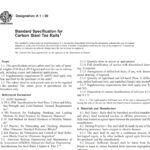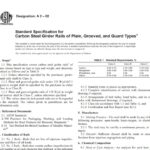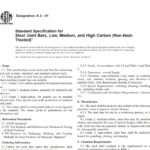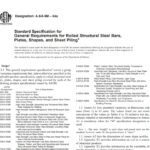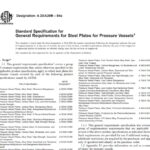Standard Test Methods for
Plane-Strain Fracture Toughness and Strain Energy Release
Rate of Plastic Materials1
This standard is issued under the fixed designation D 5045; the number immediately following the designation indicates the year of
original adoption or, in the case of revision, the year of the last revision. A number in parentheses indicates the year of the last reapproval. A
superscript epsilon (e) indicates an editorial change since the last revision or reapproval.
1. Scope *
1.1 These test methods are designed to characterize the
the toughness of plastics in terms of the critical-stress-intensity
factor, KIc, and the energy per unit area of crack surface or
critical strain energy release rate, GIA, at fracture initiation.
1.2 Two testing geometries are covered by these test methods, single-edge-notch bending (SENB) and compact tension
(CT).
1.3 The scheme used assumes linear elastic behavior of the
cracked specimen, so certain restrictions on the linearity of the
load-displacement diagram are imposed.
1.4 A state-of-plane strain at the crack tip is required.
Specimen thickness must be sufficient to ensure this stress
state.
1.5 The crack must be sufficiently sharp to ensure that a
the minimum value of toughness is obtained.
1.6 The significance of these test methods and many conditions of testing are identical to those of Test Method E 399,
and, therefore, in most cases, appear here with many similarities to the standard of the metal. However, certain conditions and
specifications not covered in Test Method E 399, but important
for plastics, are included.
1.7 This protocol covers the determination of GIA as well,
which is of particular importance for plastics.
1.8 These test methods give general information concerning
the requirements for KIc and GIA testing. As with Test Method
E 399, two annexes are provided which give the specific
requirements for testing the SENB and CT geometries.
1.9 Test data obtained by these test methods are relevant and
appropriate for use in engineering design.
1.10 This standard does not purport to address all of the
safety concerns, if any, associated with its use. It is the
responsibility of the user of this standard to establish appropriate safety and health practices and determine the applicability of regulatory limitations prior to use.
NOTE 1—There is currently no ISO standard that duplicates these test
methods. Pending ISO/CD 13586 covers similar testing and references

Click below to download Astm D 5045 – 99 pdf free
Click here to download Astm D 5044 – 02 Pdf Free Download


